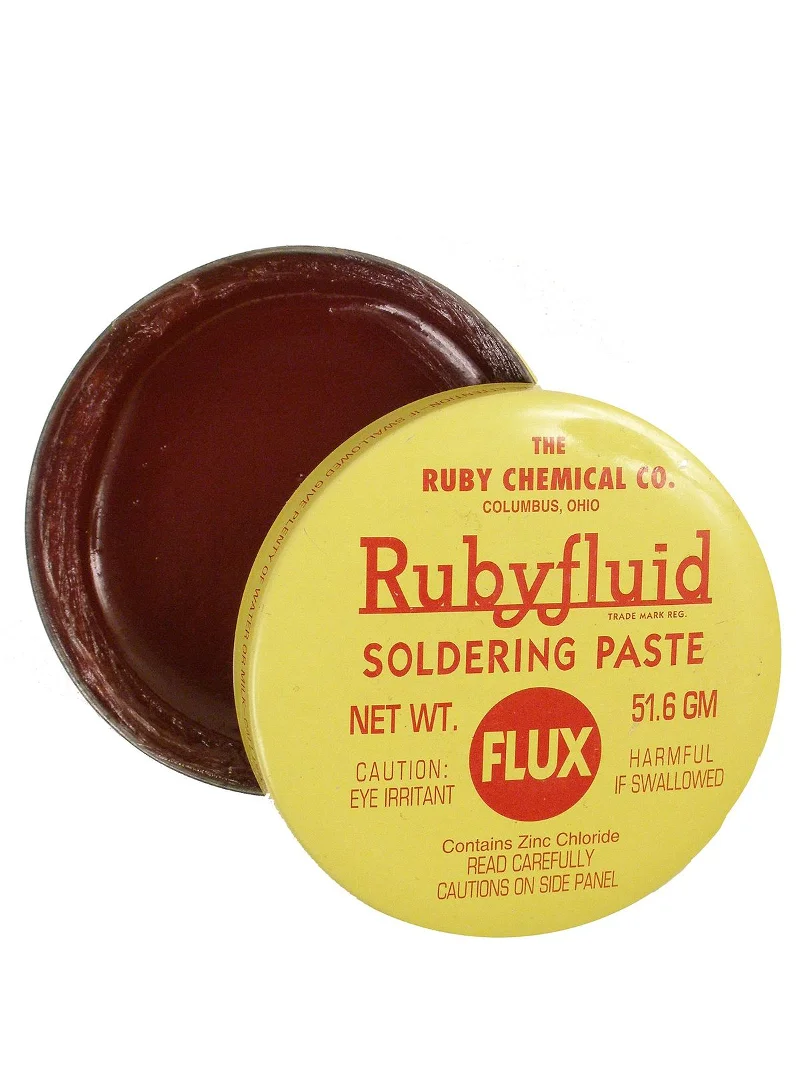Flux (not the capacitor!)
The Thrifty Rocketeer blog continues...
This is a posting that crosses over into other hobbies as well.
We all know that there is an occasional use for soldering in Rocketry. There's a clip that needs repair, or a battery terminal or a length of wire that needs to be fixed.
Whatever the repair or project, the task is the same.... joining two pieces of metal in an electrical and/or mechanical joint. When you have two dissimilar metals, or if you have a metal that is easily corroded, it works best if the tarnish or corrosion is cleaned off.
And that's where flux comes in.
Now, there are a lot of different kinds and strengths of flux.... from rosin core that is embedded inside a roll of solder, to a liquid acid flux that is brushed on and immediately attacks or brightens the metal.
The intent is for the surface of the metal to be cleaned and allow the solder to "bite" better.
Now, the first half of my life, I was only exposed to rosin core solder in Heathkit projects. I grew to love the smell. But as a grown man who has tackled more soldering projects with copper pipe than the average male, I know of the benefits of the stronger flux.
When my wife got into stained glass, we bought a squeeze bottle of liquid flux, and to this day we still have it. I break it out when needed.
But while walking through Good Works ReStore, which resells donated building materials including pipes, valves, joints and soldering supplies.... I spotted a small white plastic "tin" about the size of chew tobacco tin. It was marked "water soluble flux" and when pried open, I found a half-dried out cake of flux that could be daubed or spread upon the copper terminals that I wanted to solder.
This was the perfect blend between the two types that I had on hand. And though this small "tin" eventually dried out completely, to the point of being hard chunks unusable any more, I still keep it.
Now, I'm going to pause here to relate a tale that I heard back in college from a broadcast law professor, who described as a kid assembling his own privative radio transmitter from scrap. At least, he had it until the FCC came knocking at his parents' door and seized it. This began his fascination with broadcast law and his lifelong battle with the FCC over any number of issues as payback.
He described how he had a pair of salvaged World War II aviator headphones, but had to attach the proper jack or plug on the end. He said he also re-soldered the wires to the earphones and used flux to tin the wires.
Recently, he claimed, he had found those headsets in the attic and went to pick them up. They fell apart in his hands, the wires separating from the headset. He explained that the acid flux that he had used at the time had done a great job biting the metal and allowing the solder joint, but that it had kept on working, all the years that the headset sat inert in the attic. The wires were eaten through by the time he found them again.
This tale came to mind just last year, as I worked on a homebrew project, constructing a tape measure Yagi antenna for Amateur radio use.
For those not in the know, a Yagi antenna is the style that used to grace the rooftops in the 1960s-90s in the form of a series of cross rods or bays that pointed the antenna toward a TV station. The latest wrinkle in this has been cutting up a tape measure up into exact lengths, and attaching them in order down a spine or backbone of PVC pipe. In the middle of these bays of cross rods are a shorter pair of rod made of tape measure, that form a simple dipole antenna. To feed this antenna or remove signal from this active element, it becomes necessary to solder the coax lead directly to the exposed metal of the tape measure lengths.
This involves sanding the bright yellow paint off a half inch on the end of the tape measure lengths, and then tinning the metal and soldering a very short 5" jumper wire across the spine, connecting the two halves of this active element dipole.
So what does all this have to do with rocketry?
A couple of months after I completed my tape measure Yagi, with the intent of using it to listen for a tracker signal in the Amateur Radio band, I picked up my antenna by the handle/spine/backbone, to inspect it.
Looking carefully at each of the six tape measure elements, I came to the solder job of the active element, and discovered that one end of the 5" jumper had come free. The flux I had used had eaten through the wire or weakened the joint eventually. And I thought of my college professor's tale.
I had brushed on acid flux from the stained glass project onto the tape measure once I had exposed the metal.
It didn't take much to repair the break, and I was more careful to use the water-soluble remains of the tin of flux that I had this time. Near as I can tell, it's still attached and working well.
So my suggestion is to use flux to tin the project you're working on, but be careful how strong it may be. Rosin core solder is still great and has always worked for me.
But you'd hate to get out to the launch pad and discover your wire has been eaten through.
This has been the Thrifty Rocketeer saying, "I love the smell of rosin core solder late at night... it smells like...victory!"







Comments
Post a Comment